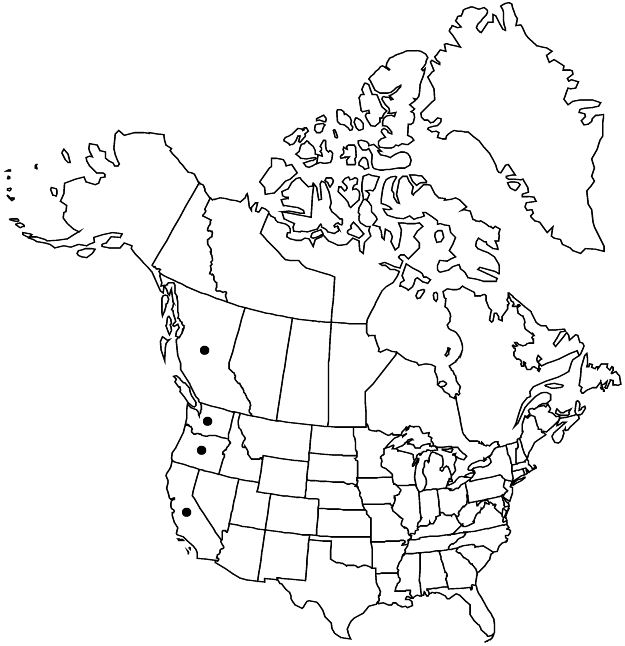Difference between revisions of "Prunus laurocerasus"
Sp. Pl. 1: 474. 1753.
FNA>Volume Importer |
imported>Volume Importer |
||
| Line 28: | Line 28: | ||
|elevation=0–600 m | |elevation=0–600 m | ||
|distribution=B.C.;Calif.;Oreg.;Wash.;Eurasia. | |distribution=B.C.;Calif.;Oreg.;Wash.;Eurasia. | ||
| + | |introduced=true | ||
|discussion=<p>Flowering specimens of <i>Prunus laurocerasus</i> with small leaves and entire margins that otherwise resemble <i>P. caroliniana</i> can be identified by their larger hypanthia and longer petals. In fruit, the stone is much harder in <i>P. laurocerasus</i> and does not split open upon drying; the flesh around the stone is thicker and more succulent.</p> | |discussion=<p>Flowering specimens of <i>Prunus laurocerasus</i> with small leaves and entire margins that otherwise resemble <i>P. caroliniana</i> can be identified by their larger hypanthia and longer petals. In fruit, the stone is much harder in <i>P. laurocerasus</i> and does not split open upon drying; the flesh around the stone is thicker and more succulent.</p> | ||
|tables= | |tables= | ||
| Line 52: | Line 53: | ||
|publication year=1753 | |publication year=1753 | ||
|special status=Introduced | |special status=Introduced | ||
| − | |source xml=https:// | + | |source xml=https://bibilujan@bitbucket.org/aafc-mbb/fna-data-curation.git/src/bb6b7e3a7de7d3b7888a1ad48c7fd8f5c722d8d6/coarse_grained_fna_xml/V9/V9_587.xml |
|subfamily=Rosaceae subfam. Amygdaloideae | |subfamily=Rosaceae subfam. Amygdaloideae | ||
|tribe=Rosaceae tribe Amygdaleae | |tribe=Rosaceae tribe Amygdaleae | ||
Revision as of 00:31, 28 May 2020
Shrubs or trees, sometimes suckering, 20–60(–100) dm, not thorny. Twigs with terminal end buds, glabrous. Leaves persistent; petiole 5–15 mm, glabrous, eglandular; blade elliptic to obovate, 6–18 × 3–7 cm, base cuneate to obtuse, margins remotely serrulate or nearly entire, teeth blunt, glandular, apex abruptly short-acuminate, apicula acute, surfaces glabrous, abaxial glandular, glands 1–several, proximal, flat, circular to oval. Inflorescences 26–32-flowered, racemes; central axes (35–)55–130 mm, leafless at bases. Pedicels 1–5 mm, glabrous. Flowers blooming before leaf emergence; hypanthium cupulate, 3–4 mm, glabrous externally; sepals spreading, triangular, 0.7–1.2 mm, margins usually entire, sometimes with deciduous glands, ciliate in spots, surfaces glabrous or hairy; petals white, obovate or broadly elliptic to suborbiculate, 3–5 mm; ovaries glabrous. Drupes deep purple-red to nearly black, ovoid to conic-ovoid, 13–17 mm, glabrous; mesocarps fleshy to leathery; stones ovoid, not flattened.
Phenology: Flowering Mar–May; fruiting Aug–Nov.
Habitat: Riparian thickets, shaded ravines, understory of urban and second-growth forests
Elevation: 0–600 m
Distribution

Introduced; B.C., Calif., Oreg., Wash., Eurasia.
Discussion
Flowering specimens of Prunus laurocerasus with small leaves and entire margins that otherwise resemble P. caroliniana can be identified by their larger hypanthia and longer petals. In fruit, the stone is much harder in P. laurocerasus and does not split open upon drying; the flesh around the stone is thicker and more succulent.
Selected References
None.